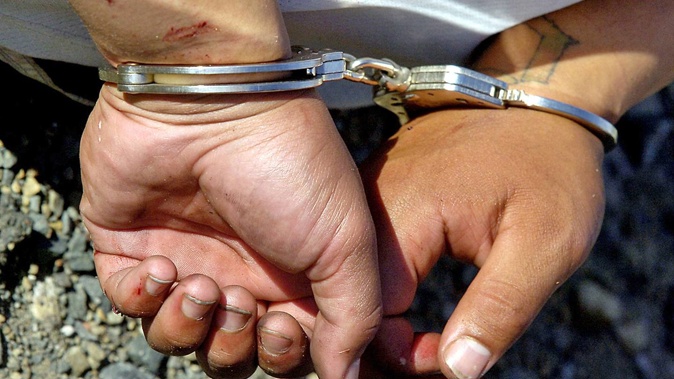
After a turbulent year of highly-publicised youth crime across the nation, data has revealed the most prolific regions of young offending as well as where it increased the most.
Police data, recently released proves overall youth crime is continuing to lessen over the years, it dropped 2 per cent nationally over the course of 2022.
However, four districts in south and central Auckland, Canterbury and Wellington saw youth crime spike.
South Auckland residents saw the heaviest increase in crime between November 2021 and October 2022, as Counties Manukau police made 1715 arrests of offenders aged between 10-17.
This was 312 more arrests than the previous year.
Coming in second was Canterbury police, which made 1221 arrests of young people of the same age, 291 more than the year prior.
Wellington police made 1107 arrests, an increase of 107 and Auckland City police made 70 more arrests than the previous year.
The rest of the regions had a decrease in youth crime, Central North Island police made 395 fewer arrests of young people than the year before.
However, the gold medal for most prolific youth offending over the course of 2022 went to the Bay of Plenty, where police made 1778 arrests of young people.
It was still 69 fewer arrests than in the 12 months prior.
- Fears of rising youth crime
- How do we stop the current wave of youth crime?
- Auckland youth crime wave: New Govt package launched in response
The latest police data, revealed in an Oranga Tamariki report, showed much of the recent rise in youth crime involved an increase in motor vehicle theft.
This comes as no surprise given 2022′s ram raid spate across the country.
However, while Counties Manukau shows a correlation between an increase in stolen cars and shop burglaries, Canterbury police have watched burglaries decrease over the last year.
According to Ben Hannifan, 80 per cent of vehicle thefts in Auckland were used in ram raids, which he said were drivers behind youth offenders wanting notoriety.
Canterbury saw more instances of young people stealing cars for the thrill of driving erratically.
“It’s not just unique to 2022,” he said.
/cloudfront-ap-southeast-2.images.arcpublishing.com/nzme/2T2X72PTQJZK7PLIRWET7JTUSA.jpg)
According to Ben Hannifan, 80 per cent of vehicle thefts in Auckland were used in ram raids. Photo / Supplied
Hannifan said many children who go on to offend come from rough families which lack safety.
“The decisions they make, which are dangerous and illegal, they aren’t in an environment which is challenged, they grow up in an experience more New Zealand kids never have.”
Youth crime across the country has halved since 2014, according to the data, Hannifan said there’s been a 2 per cent drop across the country in the past year alone.
Maori have remained considerably over-represented in the youth justice system, according to the report, with Maori young offenders making up almost 70 per cent of those arrested.
When it comes to what pushes young people into repeated crime habits, Hannifan said neuro-diverse issues and family harm are big contributing factors.
“Neurodiversity is becoming prevalent as we’re picking it up, so we do more of those assessments,” said Hannifan.
“Most of these kids won’t be engaged in school, so low-functioning and the neuro-disabilities, in particular fetal alcohol syndrome, need significant support.”
He also pointed to kids with “brain and head injuries”, which he said puts them right behind the starting line.
“It’s not an excuse for committing offences, but it helps you understand why they take those risks and make dangerous decisions.”
When a young person is arrested, referred to as a proceeding, police will determine how they’d like to progress with the offender’s case.
Hannifan said 90 per cent of young people will only offend once, their community will immediately wrap around them and offer support.
This means most young offenders never step foot in a courtroom.
/cloudfront-ap-southeast-2.images.arcpublishing.com/nzme/57JFFORZDFDTVFFNGTP5WGVFFI.jpg)
When a young person is arrested, police will determine how they’d like to progress with the offender’s case. Photo / Michael Craig
However, those who repeatedly offend will then be handed to Oranga Tamariki. Their role is to arrange a group conference, which could involve the child’s iwi and key partners.
“It’ll handle the education, health and safety side with acknowledgement of the offending, so lots of work is done to restore that impact,” said Hannifan.
Hannifan’s information suggests 10 per cent of youth offenders account for half of all offences.
It means there’s a minority group of young people who, as Hannifan put it, have come from “traumatic life experiences” that now shape their approach towards life.
Young people who repeatedly offend will commonly have walked through multiple traumatic experiences at home, through family harm, during their first 1000 days of development.
“If you experience that [trauma], your ability to adapt and grow becomes quite maladaptive. They try to survive, to manage feelings of neglect and pain.”
This trauma is difficult to shake as the child gets older, it means young people without the constant wrap-around support will fall back into patterns of offending.
“You go into Te Puna Wai [a justice residence] and you see familiar faces, as those experiences leading up to adolescence make it hard to make a shift in trajectory.”
Take your Radio, Podcasts and Music with you









